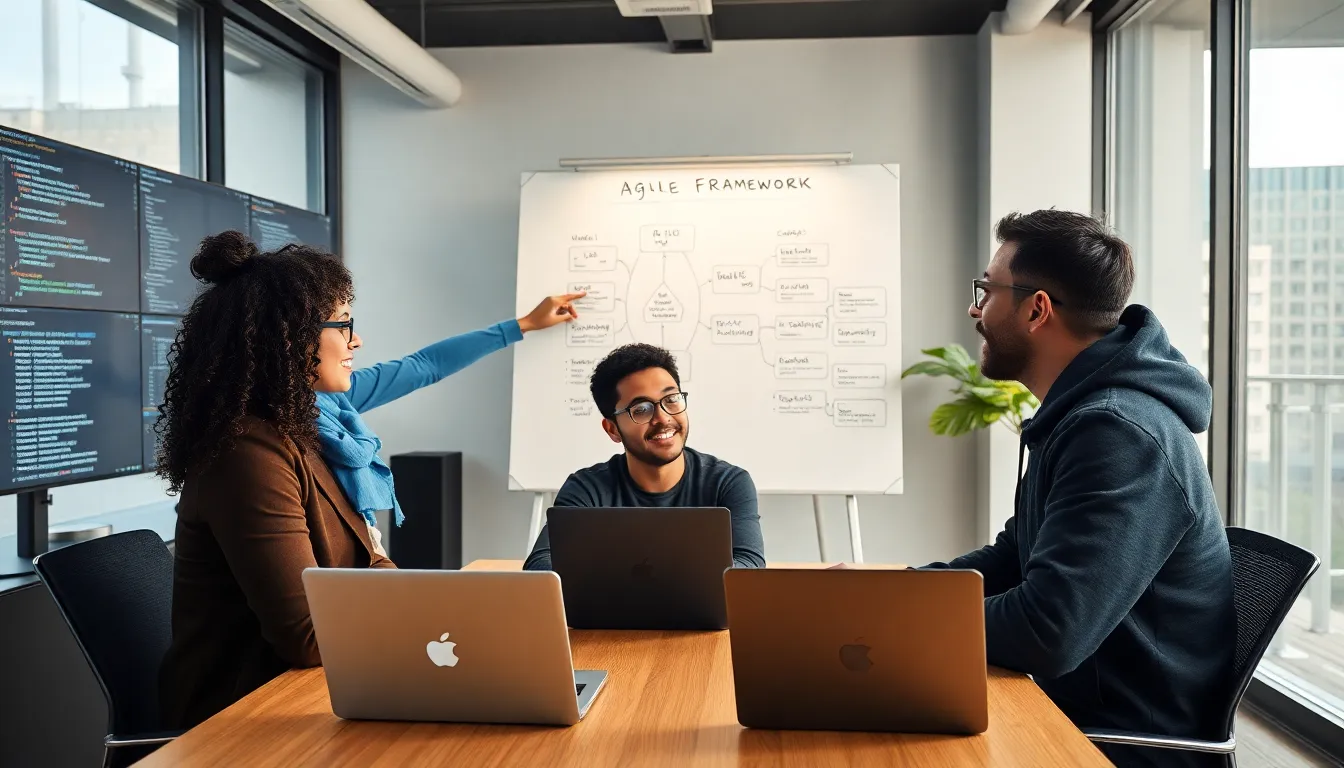In the fast-paced world of technology, staying ahead of software trends is crucial for businesses and developers alike. As industries evolve, new tools and methodologies emerge, shaping the way software is designed, developed, and deployed. Understanding these trends not only enhances productivity but also drives innovation and competitive advantage.
From artificial intelligence and machine learning to low-code platforms and cloud computing, the landscape is constantly changing. These advancements promise to revolutionize how software solutions are created, making them more efficient and user-centric. Keeping an eye on these trends enables organizations to adapt and thrive in an ever-evolving digital environment.
Table of Contents
ToggleEmerging Technologies
Emerging technologies play a crucial role in shaping the future of software development. They enable businesses to innovate, improve operational efficiency, and deliver enhanced user experiences.
Artificial Intelligence
Artificial Intelligence (AI) drives significant advancements in software trends. AI algorithms analyze massive data sets, automate processes, and enhance decision-making. Industries, such as healthcare and finance, utilize AI for predictive analytics and personalized services. Adoption of AI tools, like natural language processing and computer vision, increases efficiency, reduces costs, and fosters creativity in software solutions.
Blockchain Innovations
Blockchain technology offers decentralized and secure systems for data management. It enhances transparency, reduces fraud risks, and streamlines transactions. Industries, including supply chain and finance, implement blockchain for improved traceability and trust. Smart contracts, a blockchain feature, automate contractual agreements, ensuring faster execution while minimizing human error. The growing interest in non-fungible tokens (NFTs) and decentralized finance (DeFi) further highlights blockchain’s transformative potential.
Development Methodologies

Development methodologies shape the approach to software creation, empowering teams to enhance efficiency and adaptability. Agile practices and DevOps integration stand out as key trends in modern software development.
Agile Practices
Agile practices prioritize flexibility and collaboration within development teams. Iterative cycles, known as sprints, enable teams to respond to changes faster while delivering incremental improvements. Popular frameworks like Scrum and Kanban facilitate structured workflows, promoting accountability and transparency. Teams utilizing agile methodologies report up to 30% faster delivery times compared to traditional methods. These frameworks encourage continuous feedback, enhancing product quality and alignment with user needs.
DevOps Integration
DevOps integration aims to unify development and operations teams, fostering a culture of collaboration and shared responsibility throughout the software lifecycle. Implementing DevOps practices reduces the time between software updates and enables continuous delivery and deployment. Tools like Jenkins and Docker streamline process automation, simplifying tasks such as testing and monitoring. Organizations that adopt DevOps experience a reduction in deployment failure rates by up to 60%. This approach not only accelerates innovation but also enhances overall system reliability, ensuring smoother user experiences.
User Experience Enhancements
User experience continues to be a focal point in software development, driven by the need for intuitive and efficient interactions. Emerging trends, such as no-code platforms and personalized solutions, enhance user engagement and satisfaction.
No-Code and Low-Code Platforms
No-code and low-code platforms enable users to develop applications with minimal or no coding experience. These tools allow businesses to streamline development processes, reducing time to market. Users can create custom solutions by leveraging visual interfaces and pre-built templates, which eliminates complex programming languages. Research indicates that organizations adopting these platforms report a 50% reduction in development costs and a 75% increase in productivity. As these platforms evolve, they empower both technical and non-technical users to contribute to software creation, expanding the talent pool and fostering innovation.
Personalized Software Solutions
Personalized software solutions enhance user engagement by tailoring applications to individual preferences and needs. By integrating machine learning algorithms, software can analyze user behavior and deliver custom experiences in real-time. Often, users prefer applications that adapt to their specific workflows or preferences, leading to greater satisfaction and loyalty. Statistics show that companies utilizing personalized solutions experience up to 20% increases in customer retention rates. Furthermore, modern cloud computing allows businesses to gather and process data efficiently, further improving user-centric design and functionality.
Security Developments
Security developments in software are essential in the ever-evolving digital landscape. Organizations must adopt advanced strategies to safeguard their systems against sophisticated cyber threats.
Zero Trust Architecture
Zero Trust Architecture (ZTA) focuses on continuous verification, assuming no internal or external network is inherently trustworthy. ZTA requires authentication and authorization for every user and device attempting to access resources, regardless of location. According to a report by Forrester, companies implementing ZTA reduce security breaches by 50%. Key components include identity management, micro-segmentation, and limited access control. By limiting user privileges and maintaining rigorous access protocols, ZTA prevents unauthorized access and data breaches, enhancing overall cybersecurity stance.
AI in Cybersecurity
AI in cybersecurity streamlines threat detection and response, making it a critical component for modern security strategies. AI algorithms analyze vast amounts of data to identify patterns indicative of cyber threats. Research by Market Research Future reveals that the AI cybersecurity market is projected to reach $38.2 billion by 2026. AI-driven tools can detect anomalies with up to 95% accuracy, allowing for timely interventions. Additionally, AI automates repetitive tasks, reducing the burden on IT teams, enabling them to focus on strategic security initiatives and intelligence analysis. Machine learning models evolve by learning from new threat data, ensuring that security measures remain robust against emerging threats.
Staying ahead in the software landscape requires an awareness of evolving trends that shape technology’s future. Businesses and developers who embrace innovations like AI, low-code platforms, and Agile methodologies can unlock new levels of productivity and efficiency.
As organizations adapt to these advancements, they not only enhance operational capabilities but also drive customer satisfaction through personalized solutions. The emphasis on security through Zero Trust Architecture and AI-driven tools further ensures that systems remain resilient against emerging threats.
By keeping an eye on these trends, companies can position themselves for success in a competitive digital environment.



